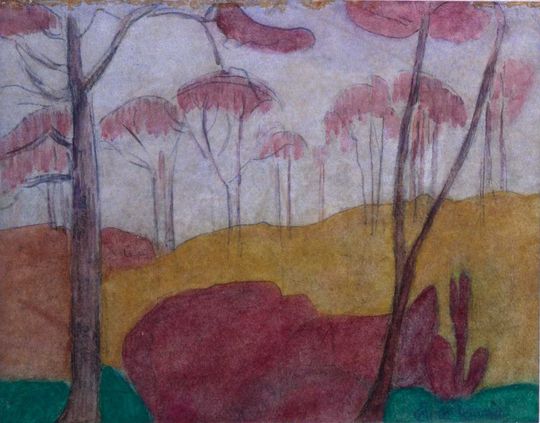The Bois d'Amour
circa 1888-1893

Crayon and aquarelle on paper
78-2-1
Acquired in the art trade in Paris in 1978
H. 21 cm - L. 27 cm
In 1887, Bernard became influenced by Japanese prints and by « Cloisonnism » which had just been invented by Louis Anquetin, and he abandons « Pointillism » for works of simplified form made of stacked blocks of colour. During the summer of 1888, he shows his work to a very interested Gauguin. This informal landscape took the name of « Bois d’Amour », a picturesque site upstream from Pont-Aven, but it does not really correspond to the steep, wooded banks of the Aven.
The Bois d'Amour
circa 1888-1893

Crayon and aquarelle on paper
78-2-1
Acquired in the art trade in Paris in 1978
H. 21 cm - L. 27 cm
In 1887, Bernard became influenced by Japanese prints and by « Cloisonnism » which had just been invented by Louis Anquetin, and he abandons « Pointillism » for works of simplified form made of stacked blocks of colour. During the summer of 1888, he shows his work to a very interested Gauguin. This informal landscape took the name of « Bois d’Amour », a picturesque site upstream from Pont-Aven, but it does not really correspond to the steep, wooded banks of the Aven.
